The Ultimate Guide to Crankshafts: Design, Function, and Maintenance Essentials
In the intricate symphony of an internal combustion engine, countless components work in harmony to produce power. Yet, among them, one stands as the unsung hero, the very heart that translates explosive energy into rotational motion: the crankshaft. Without this marvel of engineering, the pistons would merely dance up and down, unable to propel a vehicle or power machinery. To be honest, its role is so fundamental that understanding its design, function, and the maintenance essentials required to keep it running flawlessly is paramount for anyone keen on automotive or mechanical engineering.
This ultimate guide aims to demystify the crankshaft, offering an in-depth exploration of its critical aspects. We'll delve into the sophisticated engineering behind its creation, unravel the mechanics of how it performs its indispensable task, and crucially, provide practical insights into its care and longevity. So, let’s embark on this journey to appreciate the true significance of the crankshaft.
Understanding Crankshaft Design: The Foundation of Engine Performance
The design of a crankshaft is a testament to precision engineering, a complex interplay of material science, mechanical stress analysis, and manufacturing prowess. When we talk about The Ultimate Guide to Crankshafts: Design, Function, and Maintenance Essentials, the design aspect is where it all begins. A crankshaft is essentially a large, multi-throw forging or casting, typically made from high-strength steel alloys (like forged steel 4340 or cast iron ductile iron) chosen for their ability to withstand immense torsional and bending stresses. Its shape is far from arbitrary; every curve, every counterweight, and every journal is meticulously calculated to ensure optimal performance and durability.
Key design elements include:
- Main Journals: These are the cylindrical surfaces that ride in the main bearings within the engine block, supporting the crankshaft and allowing it to rotate. The number of main journals depends on the engine's cylinder count and design, providing crucial support points.
- Connecting Rod Journals (Crankpins): These are the offset cylindrical surfaces to which the connecting rods attach. The distance from the main journal centerline to the connecting rod journal centerline determines the engine's stroke, directly influencing its displacement and torque characteristics.
- Crank Webs (Cheeks): These are the arms that connect the main journals to the connecting rod journals. They must be robust enough to transmit the forces from the connecting rods to the main journals without deforming.
- Counterweights: These are strategically placed masses opposite the connecting rod journals. Their primary purpose is to balance the rotating and reciprocating masses of the crankshaft, connecting rods, and pistons. This balancing act is crucial for reducing vibration, ensuring smooth engine operation, and minimizing stress on the main bearings. Without proper counterweights, an engine would vibrate excessively, leading to premature wear and potential catastrophic failure.
- Oil Passages: Intricate internal passages are drilled through the crankshaft to deliver lubricating oil from the main bearings to the connecting rod bearings. This continuous flow of oil is vital for reducing friction and dissipating heat.
Interestingly enough, crankshafts come in various configurations, such as flat-plane (common in many four-cylinder engines and some high-performance V8s) and cross-plane (prevalent in most V8 engines). Each design has distinct firing orders and vibration characteristics, influencing engine sound and performance. The manufacturing process, whether forging for superior strength or casting for cost-effectiveness, also significantly impacts the crankshaft's final properties and suitability for different applications. In my experience, the attention to detail in the forging process, especially for high-performance applications, is truly remarkable, yielding a component that can withstand incredible forces.
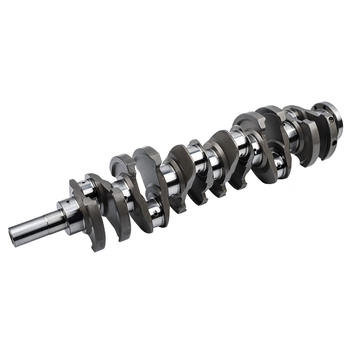
The Indispensable Function of Crankshafts: Converting Reciprocating to Rotary Motion
The core function of the crankshaft is elegantly simple yet mechanically profound: to convert the linear (reciprocating) motion of the pistons into rotational (rotary) motion. This transformation is the very essence of how an internal combustion engine generates usable power. When we delve into the Function aspect of The Ultimate Guide to Crankshafts: Design, Function, and Maintenance Essentials, we're talking about the heart of power generation.
Here’s how this critical conversion unfolds:
- Piston Movement: As fuel ignites in the combustion chamber, the expanding gases push the piston downwards with tremendous force.
- Connecting Rod Action: The connecting rod, attached at one end to the piston (via a wrist pin) and at the other to a connecting rod journal on the crankshaft, transmits this downward force.
- Crankshaft Rotation: Because the connecting rod journal is offset from the crankshaft's center axis, the downward force on the connecting rod creates a torque, causing the crankshaft to rotate. As the crankshaft rotates, it pulls the piston back up for the next stroke (exhaust, intake, compression).
- Continuous Power Delivery: With multiple cylinders firing in a specific sequence, the crankshaft receives a continuous series of impulses, resulting in smooth, continuous rotary motion. This rotational energy is then transmitted through the flywheel to the transmission, ultimately driving the wheels of a vehicle or powering industrial machinery.
Have you ever stopped to consider the sheer mechanical genius required to transform the violent up-and-down motion of pistons into the smooth, continuous rotation that drives your vehicle? It's a testament to the brilliance of early engineers and the continuous refinement of modern design. Beyond simply converting motion, the crankshaft also plays a vital role in engine timing. The timing gear or sprocket, usually mounted on one end of the crankshaft, drives the camshaft(s) via a timing chain or belt, synchronizing valve opening and closing with piston movement. This synchronization is absolutely critical for efficient combustion and engine operation.
Furthermore, the crankshaft serves as the attachment point for other essential engine components, such as the harmonic balancer (or vibration damper) at the front, which helps to absorb torsional vibrations that can otherwise damage the crankshaft and other engine parts. At the rear, the flywheel is bolted to the crankshaft, providing inertia for smoother engine operation and serving as the surface for the clutch or torque converter.
Crankshaft Maintenance Essentials: Ensuring Longevity and Reliability
Even the most robustly designed component requires proper care to ensure its longevity. For a crankshaft, maintenance is primarily about ensuring optimal lubrication and minimizing wear. This section, focusing on Maintenance Essentials, is arguably the most crucial part of The Ultimate Guide to Crankshafts: Design, Function, and Maintenance Essentials for any engine owner or mechanic.
The primary enemy of a crankshaft is friction, which leads to heat and wear. This is where engine oil comes in. The crankshaft relies heavily on a continuous supply of clean, high-quality engine oil to lubricate its main and connecting rod bearings. These bearings are typically thin, replaceable shells made of softer materials than the crankshaft itself, designed to be sacrificial wear items. They allow the crankshaft journals to spin with minimal friction, separated by a thin film of oil.
Key maintenance practices include:
- Regular Oil Changes: This is non-negotiable. Over time, engine oil degrades, loses its lubricating properties, and accumulates contaminants (like dirt, metal particles, and combustion byproducts). Fresh oil ensures a strong protective film and efficient heat dissipation.
- Using the Correct Oil Type: Always adhere to the manufacturer's recommended oil viscosity and specifications. Using the wrong oil can lead to inadequate lubrication, especially under extreme temperatures or loads.
- Maintaining Proper Oil Level: Insufficient oil can lead to oil starvation, causing immediate and severe damage to bearings and crankshaft journals. Regularly checking the dipstick is a simple yet vital habit.
- Monitoring Oil Pressure: A healthy engine maintains consistent oil pressure. A sudden drop in oil pressure can indicate a serious issue, such as a failing oil pump, clogged oil passages, or severely worn bearings, all of which directly impact the crankshaft's health. Many experts agree that an oil pressure gauge is one of the most important gauges to monitor.
- Promptly Addressing Engine Noises: A distinct knocking or rattling sound, especially one that changes with engine RPM, can be a tell-tale sign of worn crankshaft bearings (often referred to as "rod knock" or "main bearing knock"). Ignoring these sounds will inevitably lead to catastrophic engine failure.
- Avoiding Over-revving: Consistently operating the engine at excessively high RPMs puts immense stress on the crankshaft and its bearings, accelerating wear and increasing the risk of fatigue failure.
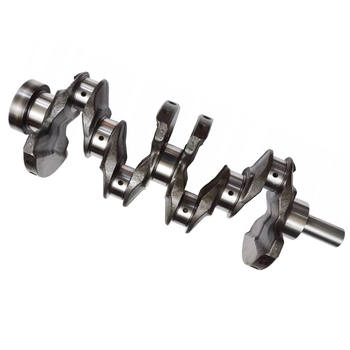
Common Crankshaft Issues and Troubleshooting: A Guide to Preventing Catastrophe
Despite their robust design, crankshafts are not immune to problems. Understanding common issues and how to troubleshoot them is crucial for preventing minor problems from escalating into complete engine failure. This section delves into the practical aspects of keeping your crankshaft healthy, a vital extension of our discussion on The Ultimate Guide to Crankshafts: Design, Function, and Maintenance Essentials.
Common crankshaft issues include:
- Bearing Wear: This is by far the most common crankshaft-related problem. Worn main or connecting rod bearings reduce the oil film thickness, leading to metal-on-metal contact, excessive friction, and heat. Symptoms include low oil pressure, metallic knocking sounds (often described as "rod knock"), and increased engine vibration. Causes range from poor lubrication, contaminated oil, extended oil change intervals, to excessive engine loads.
- Crankshaft Bending or Cracking: While rare in well-maintained engines, severe bending or cracking can occur due to extreme forces (e.g., hydro-lock, severe detonation, or catastrophic bearing failure), manufacturing defects, or prolonged operation with severe imbalances. Symptoms include severe vibration, unusual engine noises, and potential engine seizure.
- Journal Scoring or Pitting: This occurs when abrasive particles (from dirty oil or worn components) get trapped between the journal and bearing, scratching the hardened surface of the crankshaft. This damage compromises the oil film, leading to accelerated wear and potential bearing failure.
- Harmonic Balancer Failure: The harmonic balancer at the front of the crankshaft helps damp torsional vibrations. If it fails (e.g., the rubber isolator deteriorates), excessive vibrations can be transmitted to the crankshaft, leading to fatigue and premature wear of bearings and other components. Symptoms include increased engine vibration, unusual noises from the front of the engine, and sometimes a visible wobble of the balancer itself.
- Thrust Bearing Wear: While not part of the main rotational function, thrust bearings control the crankshaft's axial (front-to-back) movement. Excessive wear here can lead to crankshaft walk, causing clutch engagement issues in manual transmissions or abnormal noises.
Troubleshooting these issues often begins with careful listening and observation. A professional mechanic will typically perform an oil pressure test, listen to the engine with a stethoscope, and in severe cases, may need to drop the oil pan to inspect the bearings directly. In my experience, catching these issues early, especially bearing wear, can save you from a complete engine overhaul. It's worth noting that while some minor journal damage can be repaired by grinding the crankshaft to an undersize specification, severe damage often necessitates crankshaft replacement.
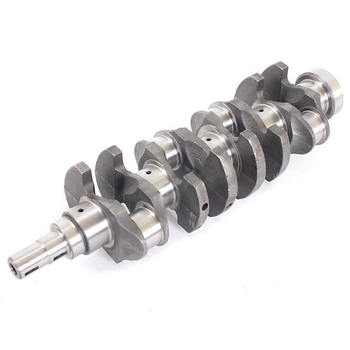
Advanced Considerations in Crankshaft Technology: Beyond the Basics
As engines evolve, so too does crankshaft technology. While the fundamental principles remain, advancements continue to push the boundaries of performance, durability, and efficiency. This section expands on The Ultimate Guide to Crankshafts: Design, Function, and Maintenance Essentials by touching upon some more advanced aspects.
Modern engine design places increasing demands on crankshafts. For instance, in high-performance and racing applications, crankshafts are often custom-designed and manufactured using exotic materials or specialized processes to withstand extreme RPMs and power outputs. Lightweighting is a significant trend, with engineers striving to reduce rotational inertia for quicker throttle response and improved fuel economy. This can involve hollow journals, optimized web designs, and the use of lighter, yet stronger, alloys.
- Dynamic Balancing: While static balancing ensures the crankshaft is balanced when stationary, dynamic balancing accounts for the rotational forces at operating speeds. This process involves spinning the crankshaft at high RPMs and adding or removing material to achieve perfect balance, significantly reducing vibration and extending bearing life, especially in high-performance engines.
- Surface Treatments: To enhance wear resistance and fatigue strength, crankshaft journals often undergo specialized surface treatments like nitriding, induction hardening, or shot peening. These processes create a hardened outer layer while maintaining a tough core, making the crankshaft more resilient to the harsh operating environment.
- Integrated Designs: Some modern engines are exploring integrated crankshaft designs, where components like the oil pump drive or even parts of the balance shaft system are more seamlessly incorporated into the crankshaft itself, aiming for compactness and reduced complexity.
The continuous pursuit of efficiency and power means that crankshaft design will remain a critical area of innovation. From the materials used to the precision of their manufacturing, every aspect is optimized to ensure this vital component can withstand the incredible forces it endures, day in and day out.
Conclusion: The Enduring Importance of the Crankshaft
From its intricate design to its indispensable function and the essential maintenance it demands, the crankshaft truly is the backbone of any internal combustion engine. It's a component that embodies mechanical ingenuity, transforming the raw power of combustion into the usable rotational energy that drives our world. Understanding its complexities, as explored in The Ultimate Guide to Crankshafts: Design, Function, and Maintenance Essentials, empowers us to appreciate its critical role and take the necessary steps to ensure its longevity.
Whether you're an automotive enthusiast, a professional mechanic, or simply someone curious about how things work, recognizing the crankshaft's significance is key. Proper care, timely maintenance, and vigilance against potential issues are not just good practices; they are fundamental to the health and performance of any engine. By adhering to the maintenance essentials discussed, you can significantly extend the life of this vital component, ensuring smooth and reliable operation for years to come. The crankshaft, in its silent, powerful rotation, continues to be a marvel of engineering, deserving of our utmost respect and diligent care.
About the author: Dr. Alex Thorne is a distinguished mechanical engineer with over two decades of experience specializing in internal combustion engine design and diagnostics. His profound understanding of powertrain dynamics, particularly crankshaft mechanics, has made him a sought-after consultant in the automotive and heavy machinery sectors. Dr. Thorne is passionate about demystifying complex engineering concepts, making them accessible to enthusiasts and professionals alike.
For more detailed information, please visit our official website: The Ultimate Guide to Crankshafts: Design, Function, and Maintenance Essentials
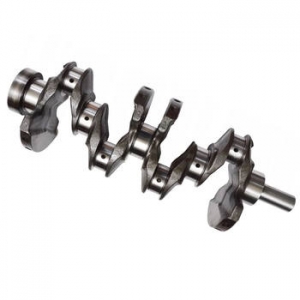 The Ultimate Guide to Getting
The Ultimate Guide to Getting
 The Unsung Heroes: Unveiling t
The Unsung Heroes: Unveiling t
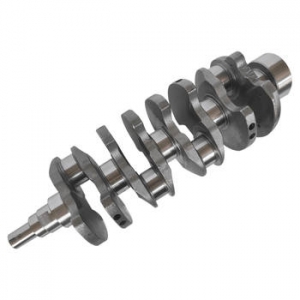 Unlocking Power: A Deep Dive i
Unlocking Power: A Deep Dive i
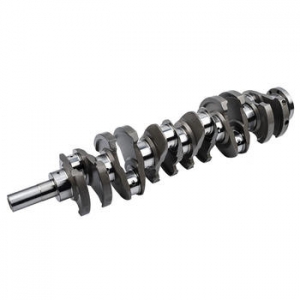 The Ultimate Industrial Cranks
The Ultimate Industrial Cranks
